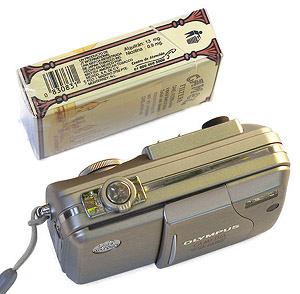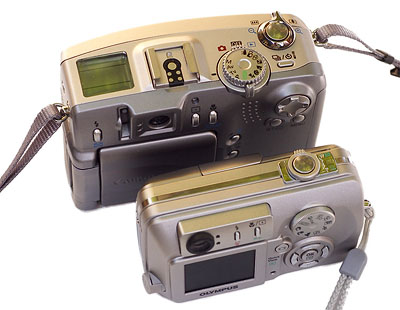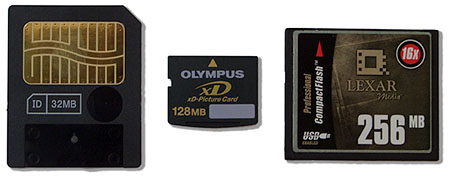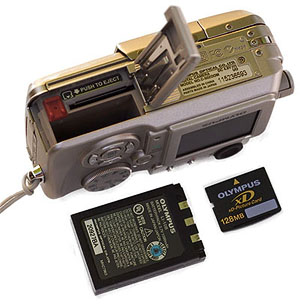|
Camedia
Olympus C-50 Zoom
by
Pedro Meyer
Español
When it comes
to digital cameras, there are a lot of questions that come up when
trying to decide what to buy. In particular now that digital cameras
have started to outsell traditional film based cameras.
Not only is the price an important element, but so are obviously,
all the specifications the camera has. However, it's not so easy
to make sense of all those terms, in particular if you have not
had previous experience with such terminology.
We will leave to others, and there plenty of them around
the internet, to provide you with a list of specifications
for the camera of your choice. However, as we have stated elsewhere,
we provide you here with some very subjective information based
on the fact that we actually use the cameras we write about, our
opinions are therefore meant solely as a guide in helping you
form an opinion. It's like asking a friend for a recommendation.
This
time, the camera we want to review, is the new Camedia Olympus
C-50, which you can find for about $ 540 US Dlls. This camera
has a lot of surprising qualities that we have found are quite
outstanding. First of these is size. A camera which is slightly
larger than a pack of cigarettes and not much heavier (194 grams),
is in and of itself not as unique as is the combination of size
with a hefty 5 megapixel file capability. On the one hand the
small physical size and on the other, the capacity to produce
a large image file does seem to be a first. This combination offers
something quite unlike other cameras we have seen or used.

The
C-50 is built in a very sturdy manner, and the clam like protection
of the lens when it is in the off mode, makes it very suitable
to carry around in your pocket with out any worry of damaging
the unit. I have carried the camera around in my pocket for several
months, and can say that the comfortable experience of always
having a camera at hand and not having to worry about something
too heavy in your pocket, is truly one of the valuable features
this camera has to offer.
This camera is considerably smaller than the Canon G3 camera which
still only offers a disappointing 4 megapixels. I was a true fan
of the Canon G1, then the G2, however, now I feel that Canon has
slipped badly when they came out with the G3 model which only
brought some refinements not worth making the leap from the G2
to the G3, thus falling behind the development curve in this very
competitive field.
The
sturdy feeling and the swivel back on the G2/G3 series are still
tops in their class, better than their Nikon counterparts. But
in the picture file size that these Canon cameras produce we truly
expected better from them, we hope that in the next generation
of cameras they will catch up and even surpass what is available
today, otherwise the G series are history.

If you look at the image comparing the dimensions of the C-50
and the G2 you will be able to see the difference in size and
understand why the former is not a camera to carry around in your
pant pockets, while the latter one, is an easy fit.
One of the reasons that the C-50 can be so small, is that they
have a new technology being used in their memory card, it's the
xD Picture Card, which was developed together with Fuji Photo.
The advantage of this new format includes its compact size and
faster data transfer speeds. This card can record data at 3 MB
per second, six times faster than a comparable SmartMedia card
which Olympus used in previous models. It is also much smaller,
as can be observed in the image, than the CompactFlash memory
cards used in many other digital cameras.
 |
Smart
Media
32 Mb |
xD
Picture Card
128 Mb |
CompactFlash
256 Mb |
Along with the reduction in the memory card size we also observed
a notable reduction of the Lithium-ion battery size, notwithstanding,
it still has a lot of power to drive both flash and normal picture
taking operations.

The lens used in the Camedia C-50 is the equivalent in a 35 mm
camera of a 38mm to 114mm zoom. The lens is an F 2.8 in wide angle
mode, to a quite modest f 4.8 aperture in telephoto format. After
using the Olympus Camedia C-4040 Zoom in the Day
in the Life of Africa project, which has a Super bright f
1.8 lens, I could imagine that not having such a bright lens on
the C-50 was a trade off in the overall aspect ratios that this
camera has to offer.I hope that in coming generations of this
model, they will find a way to make the lens used on the C-50
a bit more luminous than it is now.
Of course you also have available all the settings associated
with top of the line cameras, including Panorama picture taking
possibility, together with the software to do all the stitching
of the images for a true panorama, not as some cameras have done,
simply by cutting off the top and bottom parts of a normal horizontal
image. And Video is also an option. Who would believe that such
a small camera could have as many options available as it has.
The main question now, beyond all these specs is, how good is
this camera in taking the pictures you want? The short answer
is: it gives you impressive results, however, the art is still
resolved by you.
Pedro
Meyer
February 28 2003
P.S.
After having written all the above, and with the dizzying speed
of change we can't leave out a last minute bit of news. Last week
Fuji Photo Film ( the partners with Olympus in developing the
technology for the xD Picture Card) updated its line of FinePix
digital cameras.
The
one that will likely have photo enthusiasts buzzing is the F700.
It contains a new technology component called a Super CCD SR.
A CCD --it stands for charge coupled device-- is essentially a
memory device that uses transistors to capture light. This CCD,
Fuji says, has "Super Dynamic Range," hence the SR.
What it all means is that this camera has an effective resolution
of 6.2 million pixels, which Fuji claims is a market first. The
CCD device has 3.1 million large pixels--called S pixels--with
a high sensitivity to light, and another 3.1 million smaller pixels--R
pixels--with a low sensitivity to light. The result is an improvement
in the range of light the camera is able to record. Images should
have more of the visual subtlety and nuances that are more readily
visible in analog photography. It can produce images with a maximum
resolution of 2,832 pixels by 2,128 pixels.
|